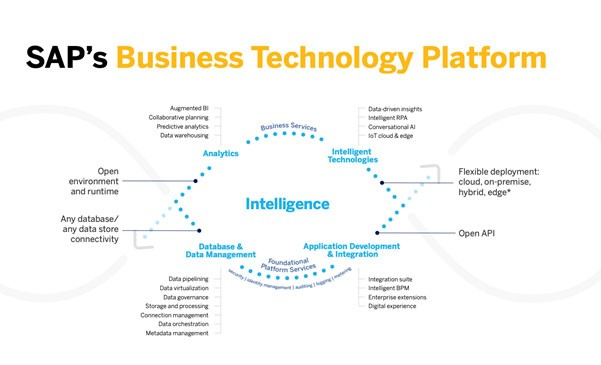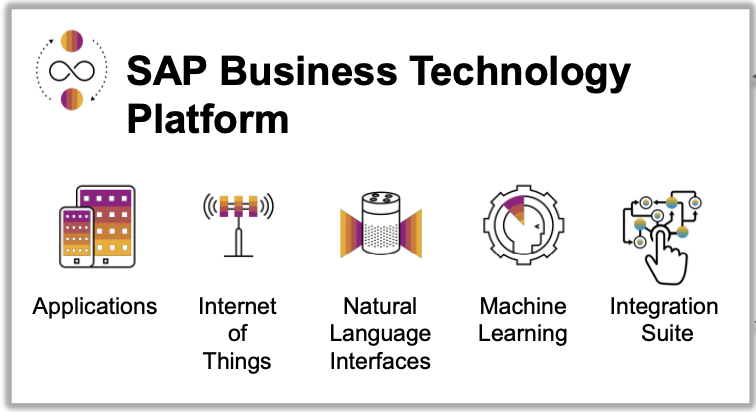Why SAP BTP is the ultimate Hyperautomation Platform?
13-Dec-2022‘Hyper-automation’ is the discipline of automating and digitizing your company administration. This new term applies to any jobs or processes that may be made to function more efficiently by applying innovative technology.
But what is the new jargon about?
You might be wondering how we know about automation and bots, which have been available on the market for a while. What does SAP’s new buzzword, “Hyper Automation,” mean?
Source: https://www.linkedin.com/pulse/
With the help of numerous tools that are linked to them, a new generation of more intelligent bots that Hyper Automation is offering can perform tasks much more quickly. Now they can perform previously impossible tasks because they do them quickly, intelligently, and efficiently.
Interestingly, SAP has been at the core of hyper-automation with its SAP Business Technology Platform modules. So, let’s look at some aspects of hyper-automation and how it affects businesses.
Why is Hyperautomation Important?
Businesses may use the hyper-automation-provided architecture to enhance, incorporate, and expand upon enterprise automation. While addressing their disadvantages, it expands on the benefits of RPA technology.
RPA has grown in popularity when compared to other automation technologies, and this is due to its usability and intuitiveness. Since RPA replicates how users interact with apps, employees may automate all or part of their employment by recording how they execute tasks.
Because bots imitate human behavior, automated work activities may also be evaluated for accuracy, speed, or other related criteria that organizations use to grade staff performance on comparable jobs.
Early RPA: An Approach to Hyperautomation
One significant disadvantage of early RPA initiatives for business applications was that the technology needed to be improved to scale. A 2019 analysis by Gartner found that just 13% of businesses could grow early RPA projects. Enterprises are forced to consider the types and maturity of the technology and procedures necessary to expand automation efforts due to hyper-automation.
According to Gartner, the key to hyper-automation is for businesses to have a mechanism for automating the automation. This distinguishes hyper-automation from other automation frameworks that concentrate on enhancing automation tools or ideas like DPA (Digital Process Automation), IPA (Intelligent Process Automation), and cognitive automation that focus on automation.
How Hyperautomation Works via SAP Modules?
Accelerates Complex Work
With the help of more sophisticated work that depends on automated human knowledge input. Hyperautomation offers a quick way to include everyone in changing the company.
Deploying Digital Workers
An intelligent digital workforce that can handle repetitive activities to improve employee performance is created by upskilling RPA. These Digital Workers, who can link to numerous corporate systems, work with structured and unstructured data, evaluate data and make judgments, and find new processes and automation possibilities, are the change agents of hyper-automation.
Why Hyperautomation is a Necessity?
By implementing this technology, organizations may grow their operations in response to employee and consumer demand. This results in higher work quality and more engaged employees.
The technology also enables digital organizational transformation and boosts return on investment.
Source: https://eursap.eu/
Government agencies can also profit from hyper-automation as they are now forced to rely on fragmented legacy systems and delayed decision-making procedures due to a lack of automation.
Hyperautomation allows bots to carry out activities that RPA only permits humans to automate. This technology is not only prepared for the future, but it also enables robots to read into and enhance business processes.
Challenges Associated with Hyperautomation
Businesses should view the latest automation technologies as something other than a one-size-fits-all answer. They ought to invest in automation with caution and consider the potential effects of new technology.
An organization must first create a thorough inventory of its business procedures. It should also establish which procedures are more crucial than others to achieve this.
A segregated architecture is necessary for hyper-automation. Hyperautomation will probably be a burden rather than a benefit for the organization if it has a digital strategy.
Future of Automation is Bright with Accely
Hyperautomation has a bright future and will significantly influence both organizations and employees.
Businesses can boost efficiency, productivity, and accuracy through intelligent process automation. Additionally, it will make it possible for companies to save expenses and compete more successfully worldwide.
So, wait no more, leverage the future of automation with BTP via your SAP implementation partner today!














